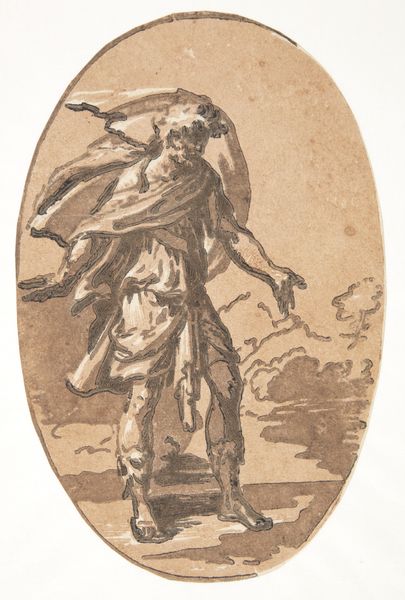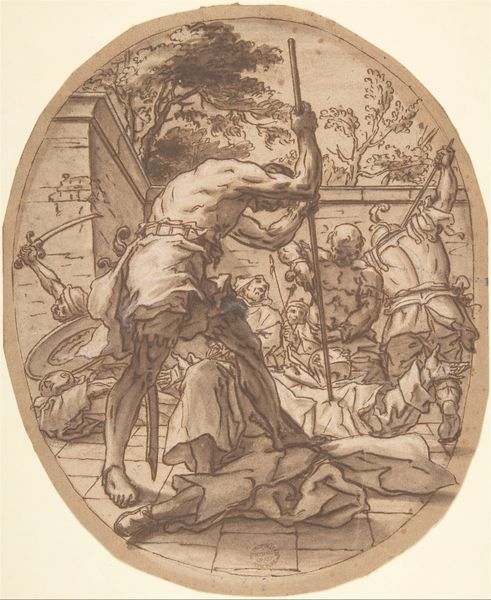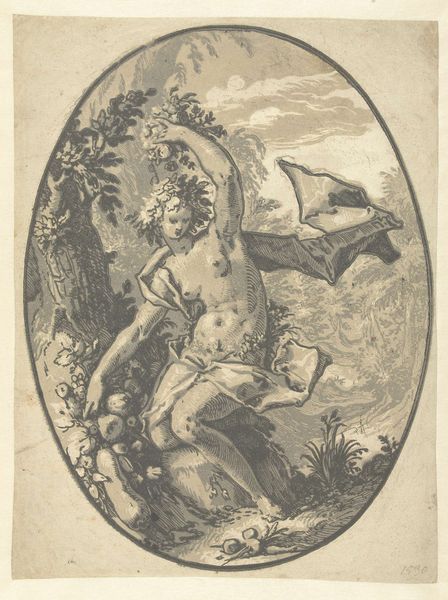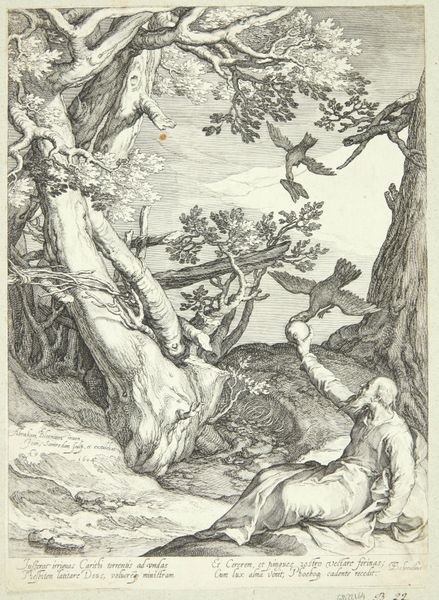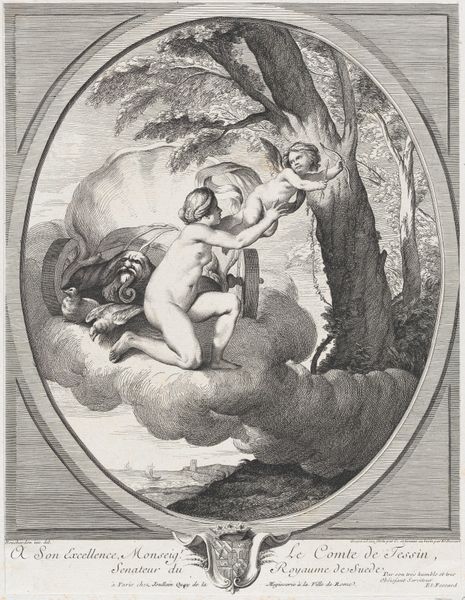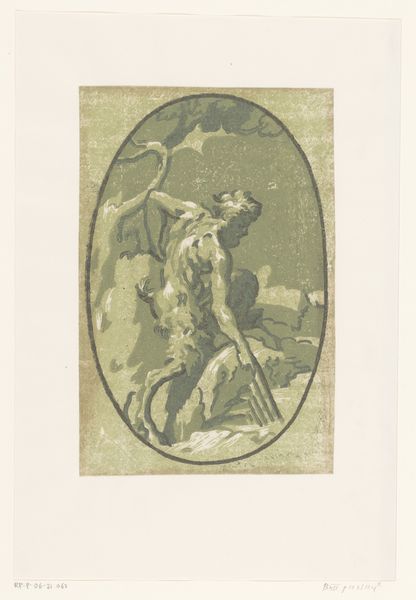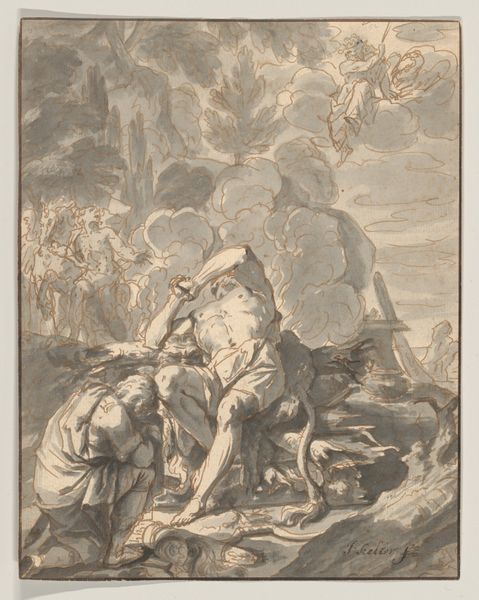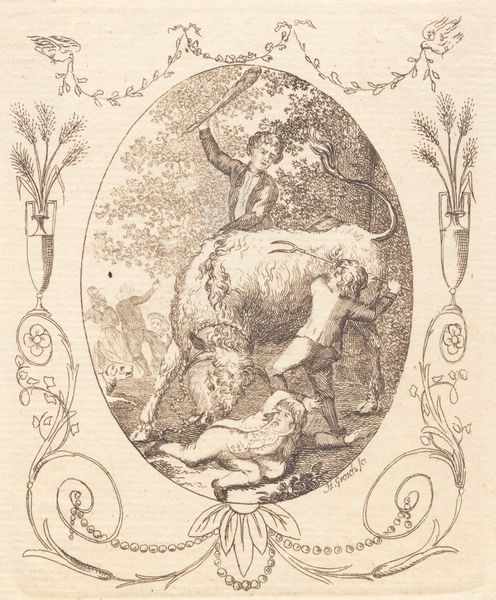
drawing, print, engraving
#
drawing
#
allegory
# print
#
figuration
#
italian-renaissance
#
nude
#
engraving
Dimensions: 13 9/16 x 10 1/2 in. (34.5 x 26.7 cm)
Copyright: Public Domain
Editor: So, this is Hendrick Goltzius' "Proserpina," created around 1594. It's a drawing, or maybe a print, over at the Met. There's something so dynamic about the figure and her swirling drapery – but it’s rendered in, like, one tone? How would you break this down visually? Curator: Consider first the ovoid format. The artist harnesses the compositional strategy to compress a wealth of information—rendering the ground plane, Proserpina herself, various botanical specimens, and a dynamic sky. This all appears in shades of brown, or as the French call it, en brunaille. Editor: Right, I see all the detail in just brown. Is that unusual? Curator: The use of a single color family can heighten the impact of other formal elements. Note how the engraved lines establish Proserpina’s twisting pose, from her arched foot, up the swirling drape to the outreached hand offering flowers to the viewer. The limited palette emphasizes these linear rhythms. Observe also the figure’s carefully constructed musculature, and its debt to the idealized male nudes found in classical sculpture. The botanical details—are those pomegranates she's holding? Editor: Yeah, I think they are! Symbolizing the underworld because she ate them there. Do you think he’s trying to make a comment on like, beauty versus mortality with her partially exposed body but impending doom? Curator: It’s tempting to allegorize the image as such. However, notice also how the printmaking technique—engraving—allows for incredibly fine lines that simulate shadow and volume, bringing depth and realism to a mythical subject. This effect becomes paramount. The meaning emerges less from iconographic elements, than it does from the striking visual impact of virtuoso draughtsmanship. Editor: I see. The how is as important as the what. It’s a technically amazing print. Curator: Precisely! By understanding the work's formal elements we understand it as a physical achievement as much as a representation.
Comments
No comments
Be the first to comment and join the conversation on the ultimate creative platform.

